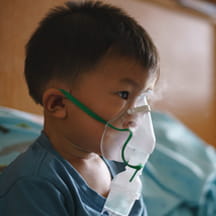Transitions of care can occur in multiple ways—from inpatient to outpatient, from one outpatient provider to another, from one inpatient setting to another, or from the inpatient setting to home. These transitions create situations where the care of a pediatric patient is handed off to a new set of health care providers or to home-based family caregivers, in the case where the patient is being discharged to home after a hospitalization.
An effective transition will reduce the likelihood of inappropriate care and potential medical complications in the next setting of care. The content of the written discharge instructions provided to families and caregivers is a critical element for a successful transition.
Funded by the Pediatric Quality Measures Program, the Center of Excellence on Quality of Care Measures for Children with Complex Needs developed quality measures related to transitions of care and mental health care in hospital settings. As part of this effort, the Pediatric Hospital Improvement Project (P-HIP) tested the measures at eight children’s hospitals in a quality improvement collaborative.
The Hospital-to-Home Transitions Collaborative sought to improve overall performance on hospital-to-home transitions by improving on the quality of the written discharge instructions provided to families and caregivers.
Eight CHA member hospitals serving children insured by Medicaid or the Child Health Insurance Program (CHIP) participated in this collaborative:
- Seattle Children's Hospital
- UCSF Benioff Children's Hospital Oakland
- Children's Hospital Colorado
- University of Iowa Stead Family Children's Hospital
- Monroe Carell Jr. Children's Hospital at Vanderbilt
- Cincinnati Children's Hospital Medical Center
- Medical University of South Carolina Children's Hospital
- Mount Sinai Kravis Children's Hospital
The change package includes a set of evidence-based practices that are based on the findings from the improvement work performed by the eight collaborative teams. It contains valuable information about the effective strategies identified by the participating hospitals and provides guidance on how other teams can improve these practices in their own hospitals. Appendices contain examples of tools and templates that can be of assistance as this work is done.






